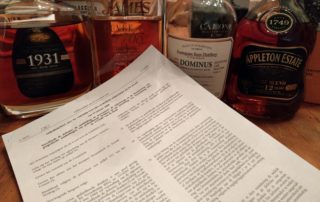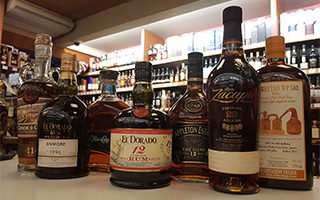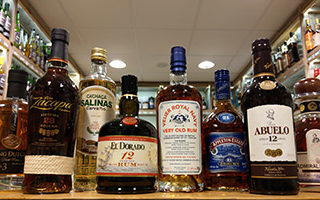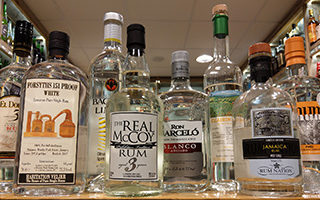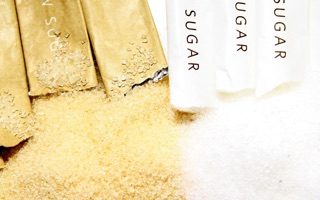Misconception #5: Rum has no rules!
Rum has no rules!
This is the fifth and final article in this series on rum misconceptions. In previous articles, we learned that not all white rums are the same, rum isn’t sweet, darker rum isn’t necessarily older, and age is a poor indicator of quality. Here, we’ll dispel the notion that rum has no rules.
It’s popular and trite in rum circles to say that rum has no rules or regulations. Yet it’s equally true that whisk(e)y has no regulations. Think that’s wrong? Read on.
In his seminal book, And a Bottle of Rum: A History of the New World in Ten Cocktails, author Wayne Curtis writes: “Bourbon fanciers, who often claim for their tipple the title of ‘America’s spirit,’ drink one of the most regulated spirits known.” He goes on to say that “Rum embodies America’s laissez-faire attitude: it is whatever it wants to be. There’s no international oversight board, and its taste and production varies widely, leaving the market to sort out favorites.”
It’s a compelling narrative—rum is free from those pesky regulations, so it can evolve to soar with the eagles. However, the passage has two critical words that constrain its scope: “bourbon” and “international.”
Bourbon is a subcategory of whisk(e)y, made only in America. However, other types of whisk(e)y are made all over the world—from northern Scotland to the south of Argentina. Bourbon’s production regulations are defined and enforced by the United States. Likewise, the single malt Scotch whisky regulations were conceived of by Scottish producers and enforced by Scottish authorities. Whisk(e)y made in India also has a distinct set of regulations. It’s no surprise that the American bourbon, single malt Scotch whisky, and Indian whisk(e)y regulations are quite different from one another.
The term “regulations” really is a disservice to their intended purpose. Country-specific regulations aren’t in place to make things harder or to prevent producers from making what they want. A better term for them is “protections.” They protect producers in a given region from outsiders creating a potentially inferior product and passing it off as something it’s not.
A great example of the protection gained from regulations is the American bourbon industry. In 1964 American whiskey producers banded together to define bourbon’s requirements, including that it “…is a distinctive product of the United States and is unlike other types of alcoholic beverages, whether foreign or domestic.” The net effect was to protect American bourbon from Mexican and Canadian products coming into the U.S. and being sold as cut-rate “bourbon.”
Many rum producing countries have production regulations (ahem… protections). For example, the French island of Martinique enforces very precise rules for how rhums bearing the Appellation d’Origine Contrôlée (AOC) label are made. Countries such as Barbados and Jamaica adhere to the 2008 Caricom rum regulations. In 2013, Cachaça was recognized by the United States as a unique product and not just rum made in Brazil. Even Cuba has a detailed Geographical Indication that outlines how Cuban rum must be produced.
Country-specific rules for these rums are just as meaningful as the bourbon or Scotch whisky regulations. There is no international organization declaring that rums from all countries must adhere to the same regulations. The same is true of whiskey. There’d be open revolt if an international agency tried to standardize worldwide whiskey making regulations.
Part of rum’s perception problem is that the high value, regional designations haven’t entered the general consumer’s consciousness. Drinkers fully expect that bourbon and single malt scotch belong in distinct sections on the liquor store shelf. But when it comes to rums, retailers generally make no attempt to differentiate the Martinique AOC rhums, the Puerto Rican Bacardi rums, the Tanduay Philippine rum, or the Appleton Jamaican rums.
In the wine world, it’s common to organize by varietals—Merlot, Chardonnay, and so on. Likewise, within the spirits realm, retailers have no problems listing bourbon, Canadian whisky, Japanese whisky, and scotch whisky as distinct products. But when it comes to rum, odds are that they have one overarching category: rum.
Another indignity that rum suffers is the lack of enforcement of even the most minimum requirements. The U.S. Tax and Trade Bureau (commonly known as the TTB) defines rum as “Spirits distilled from the fermented juice of sugar cane, sugar cane syrup, sugar cane molasses, or other sugar cane by-products at less than 95% alcohol by volume.” The key word in this definition is “cane.” Yet in 2016 the TTB allowed the sale of a “rum” made from sugar beets. Despite a large uproar from rum enthusiasts and producers, this beet rum is still sold today as “Colorado rum.”
Another example of lackadaisical enforcement: the U.S. TTB recognizes the authority of the single malt scotch and Cognac regulations, meaning that to be sold in the U.S., those spirits must meet the same requirements as if they were being sold in Scotland or France, respectively. Not so with rum. The Caricom regulations for rums from countries such as Barbados and Jamaica are effectively irrelevant in the U.S. As long as a product meets the U.S. TTB definition for rum (see above), it can be labeled and sold as such.
By now, it should be clear that the rum category has an image problem. There are exceptional producers like Foursquare, Mount Gay, Rhum Clément, and Appleton making rums that stand toe-to-toe with the finest whiskeys and brandies. And these producers work mightily to demonstrate rum’s inherent value. Yet far more of the category’s overall marketing dollars goes toward promoting a pervasive pirate and beach party theme rather than promoting quality.
Mezcal, including the tequila subcategory, was once in a similar position as rum—inexpensive hooch for mixed drinks or party shots, and not a spirit worth enjoying neat. However, in time the public perception has turned around—the $1 billion purchase of Casamigos by Diageo is only the latest evidence that tequila is now firmly entrenched in people’s minds as a premium product, in spite of the ubiquitous presence of lowest common denominator players like José Cuervo Gold.
The rum category is at a crossroads. Can it get past all the misperceptions that we’ve addressed so far? That it’s too sweet, all the same swill, and has no regulations? Only time will tell. But know that there’s a dedicated group of devotees working every day to share their enthusiasm for great rums and to elevate the category. Join us quickly!

